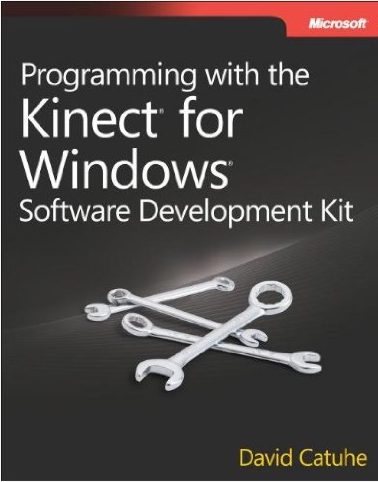| Programming with the Kinect for Windows Software Development Kit |
|
Author: David Catuhe Getting beyond the basics with Kinect can be a matter of a lot of knowledge applied with imagination. This book might provide a shortcut. This book is specifically about the Windows SDK for the Kinect so don't expect any coverage of the open source drivers. The programs are also in C# and you really need to be a reasonable C# programmer to get anything much from this book.
It starts off with a look at the general idea and principles of the Kinect and a brief look at its basic operating modes. Even here, right at the start, the tone is a bit more advanced than usual and a bit more rushed. What are we rushing on to? Well chapter 3 and 4 explain some very standard material - how to read the Kinect's color and depth streams and how to use Kinect Studio to record data to be used later in testing. Chapter 5 marks the start of a whole section on guest recognition. This is the real meat of the book and really the reason you would buy it. The introductory chapters deal with the material too fast for the beginner and not in enough depth for the expert. Chapters 5 through 8 are all for the expert or rather for the Kinect programmer who knows how to use the Kinect but doesn't really know how to go beyond the basics and implement gesture recognition. This is great, but there is a problem. The explanations are a bit limited.
There is a great deal of code presented and if you are happy to read and work at understanding it then you might get some value from it. You might even get some value by simply copying the code and using it in your own projects. What is more difficult is to work out the principles involved in the design. The explanations are almost good enough but not quite. It is easy to understand the working of the individual classes and methods but harder to see how the whole thing fits together. The final part of the book consists of a set of three chapters showing how to use the Kinect as an input device and how to implement simple virtual reality. As projects they are really good, but as explanations of how to do things - not so good. If you just pick the book up and flick though it then the overwhelming impression is of code. This is good if you want to read code, but it gives you an idea of how little explanation there is. What is lacking from this book is any overview or the thinking behind the projects or how you could do something in a range of different ways. To get anything at all from the book you need to be a reasonably good C# programmer and preferably know a little about how to use the Kinect and the SDK. The ideal reader for this book is someone who has tried to create the sort of project presented in the book and got stuck - this would certainly get you unstuck and it might even inspire you to go further. Recommended but with conditions.
|
|||
| Last Updated ( Thursday, 13 December 2012 ) |

